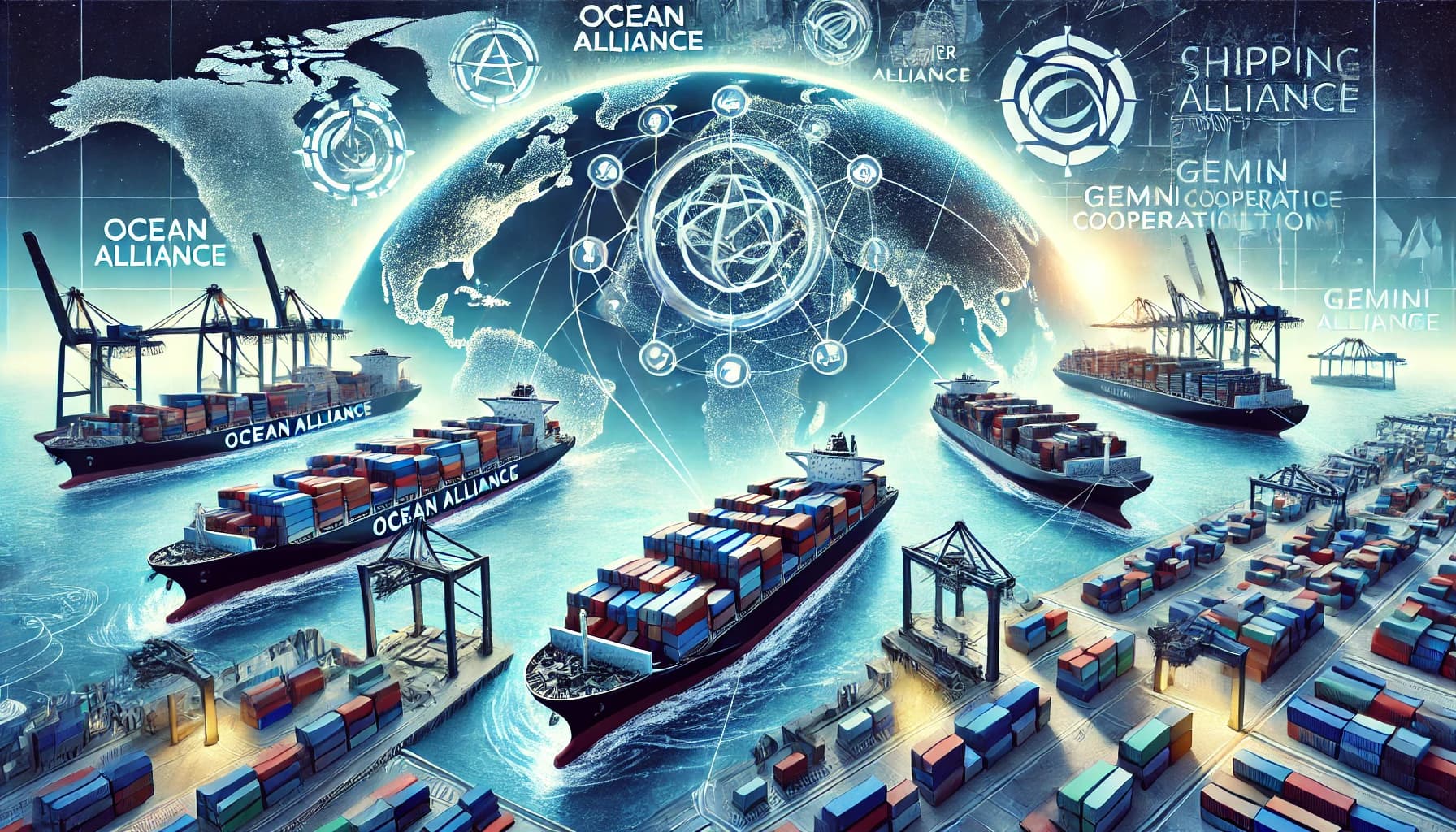Everything You Need to Know About Cargo & Container Ships
Jul 04, 2024 · 21 mins read ·
Shipping & Vessels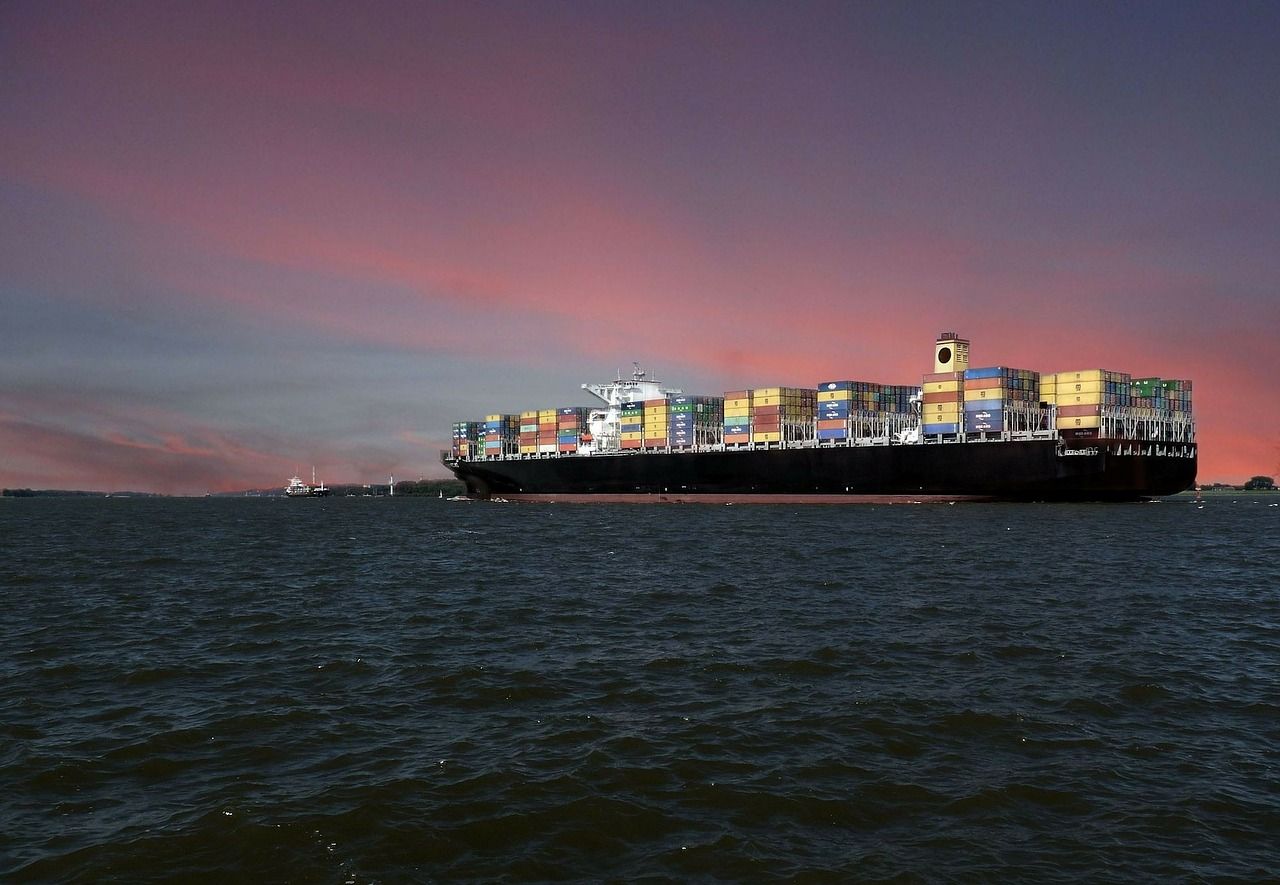
Ever wondered what the difference between a cargo and a container ship is? Ever wanted to know exactly what a cargo ship is and whether or not there are different types of cargo and container ships? You’ve come to the right place!
To answer the first question, the difference between a cargo ship and a container ship is that a container ship is a type of cargo ship. They both carry cargo - or freight - albeit in slightly different ways.
In this article we’ll take a closer look at both container and cargo ships - and the many different varieties and classifications that fall under those categories. We’ll also dive into what shipping containers are, how many containers a cargo ship can carry, and what it’s like working on a cargo ship.
By the way, this is the first in a series of deep dives into different types of boats, yachts, ships and vessels, so don’t forget to check out some of our other articles about other merchant navy ships as well as non-commercial boats and watercraft.
ARE YOU LOOKING FOR JOBS ON CONTAINER SHIPS? VIEW MARTIDE’S CONTAINER SHIP JOBS NOW!
Read more: Everything You Need to Know About Coaster Vessels
Ever wanted to know what an oil tanker, an offshore vessel, a crane vessel, a gas carrier ship, a dredger, a bulk carrier such as a Panamax or a Supramax vessel, a lightship, a car carrier, a mining ship or a RoRo ship does? This is the place to find out! But for now, let’s take a look at…
What are cargo and container ships?
Cargo and container ships are a big part of the merchant navy (or merchant marines.) Used for transporting various goods, products and materials by sea from one port to another, it’s probably not all that surprising that the shipping industry is responsible for the transportation of 90% of global trade.
That equates to approximately an eye-watering 11 billion tons of goods transported annually by sea - and nearly 60% of this cargo is shipped in large containers.
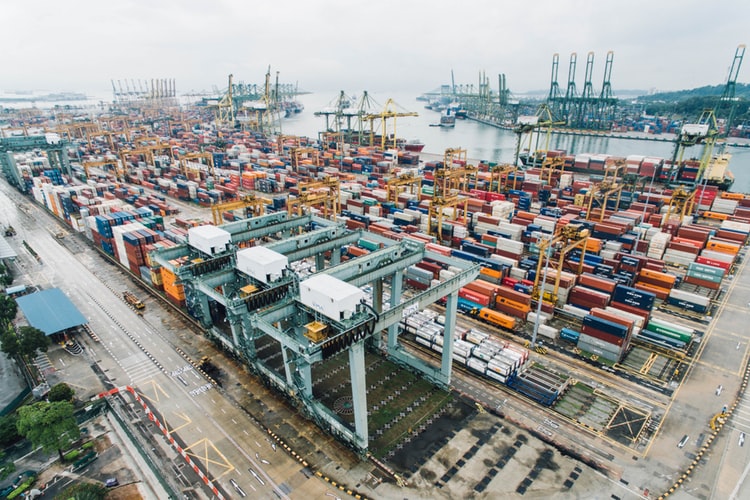
And what that means is that there are a mind-boggling amount of cargo ships traversing the world’s oceans at any given moment in time.
(By the way, you may also hear container and cargo ships being referred to as freight ships or freighters. Freight, of course, being another word for cargo.)
Read more: Everything You Need to Know About LNG & LPG Tankers
So what type of cargo, or freight, do these vessels carry? How about anything and everything?!
In fact, due to the vast quantities of products and materials cargo ships are tasked with carrying from A to B, vessels are actually divided into categories depending on the type of cargo.
Different types of cargo ships
Generally speaking, cargo ships can be classified into eight different types, depending on the freight that they carry. These are:
- Cargo ships: Carry goods such as clothing, machinery, food, furniture and other freight that can be packaged.
- Multi-purpose vessels: Carry a variety of different types of freight of both a dry and liquid nature.
- Bulk carriers: Carry loose goods that are not packaged such as coal, cement, sand, and grains etc.
- Tankers (including oil tankers and chemical tankers): Carry oil, chemicals, petroleum, and gas.
- Container ships: Also carry packaged goods, like cargo ships, but the difference is, freight will be stored in shipping containers.
- Reefer ships: Are refrigerated so carry perishable goods such as meat and fish, dairy produce, and fruit and vegetables.
- RoRo ships: Short for roll-on / roll-off, RoRo ships carry wheeled cargo - cars, vans, trucks, trailers etc. - which can then, you guessed it, be rolled on and off a vessel.
- Feeder ships: These are small to mid-sized container ships which ‘feed’ larger vessels with containers. They typically run from a port to a central hub or container terminal delivering containers which are to be picked up by another ship.
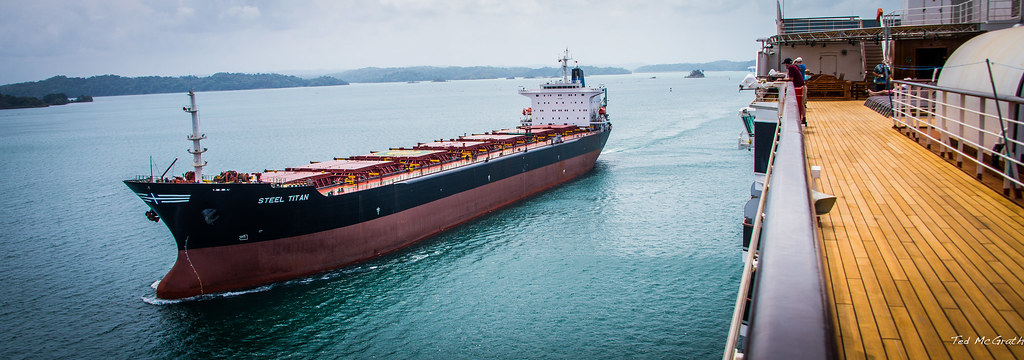
In some of our other articles we’ll be taking a more in depth look at these vessels.
ARE YOU LOOKING FOR JOBS ON CONTAINER SHIPS? VIEW MARTIDE’S CONTAINER SHIP JOBS NOW!
Now, just to break things down a tiny bit more, cargo ships can also be broken down into two further categories: Tramp ships and liners. What does this mean? Read on.
What is the difference between a tramp ship and a liner?
Cargo ships, including the above feeder ships, container ships, tankers etc, also fall under the category of tramp ship or liner. The difference between them is:
Liners: A cargo liner charges a tariff and has a pre-scheduled route and fixed port rotation to follow. These ports and the date of arrival will be published and adhered to, unless unforeseen circumstances, such as delays at a previous port or adverse weather conditions prevent this from happening.
Read more: Everything You Need to Know About Cable Laying Ships
Tramp ships: A tramp ship, or tramper, does not follow a pre-fixed schedule and is instead chartered by different users on a contract basis. Smaller-sized shipping companies who have smaller fleets will mainly use a tramp ship service, and these vessels are often available at short notice.
Do cargo and container ships carry passengers?
This is a question that pops up fairly frequently on travel and backpacker forums.
Travelers who are looking for a cheaper alternative to cruises, who don’t want to fly, who enjoy the idea of ‘slow travel’ and who fancy seeing the world from a different perspective are sometimes drawn to the idea of crossing the ocean by container or cargo ship. (Often much to the bemusement of those who actually work in seafarer jobs!)
Read more: Everything You Need to Know About Tugboats
Be aware that this is not a luxury approach to ocean passages - a cruise ship it is not. It's not even a ferry! Be prepared for little to no entertainment apart from a chat and maybe a game of cards with crew who are on their downtime.
Instead this is about experiencing something different, taking time out to read, star gaze, and admire Mother Nature - bear in mind that many passages will take a few weeks at the very least.
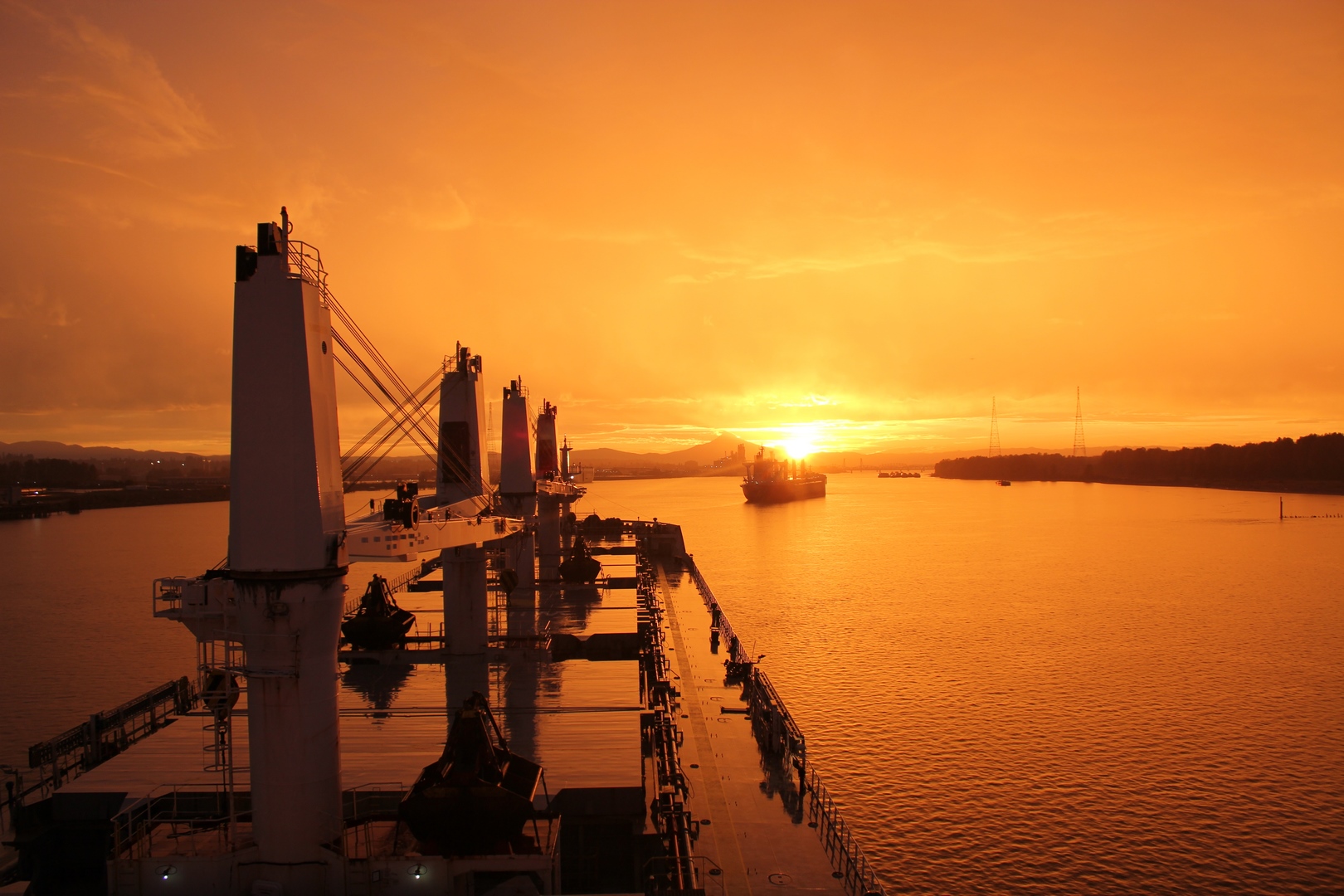
You should, however, be given a comfortable, and often spacious, cabin plus three meals a day, all prepared by the ship’s Cook in the galley. And it will give you valuable insight into what life is like working on a cargo ship.
Read more: Everything You Need to Know About Pilot Boats
You will need to do a fair bit of research and find a travel agent that specializes in cargo ships that carry passengers and it’s not as easy as hopping onto a flight, but if a unique experience is what you’re looking for, container ship travel as a passenger could be for you.
A closer look at container ships
Because a container ship is what many people think of when it comes to ocean going transportation of freight, we’ll take a closer look at these vessels.
Container ships can hold vast volumes of cargo, all of which will be packed into shipping containers and then loaded onboard the vessel. The dimensions of containers are standardized so that they can be easily and efficiently transferred to another mode of transport, such as a freight train, for onward travel.
The method of transporting goods by container - also known as containerization - was first used in the early 20th century primarily in the form of rail and road containers, however it really came into its own in the 1950s and 60s when ships that were specifically built to hold shipping containers became the norm.
How is freight loaded onto cargo and container ships?
The timely and accurate transportation of cargo in containers across global shipping routes is governed by a precise science and cargo must be loaded (and unloaded) onto, and off of, vessels in a quick and efficient manner - albeit a safe one, of course.
Shipping containers were originally loaded onboard vessels through a system of cranes and ramps, and although cranes do still have a big part to play in the loading and unloading of containers, cargo handling systems and lashing are now also used to ensure that containers are safely and efficiently moved and secured.
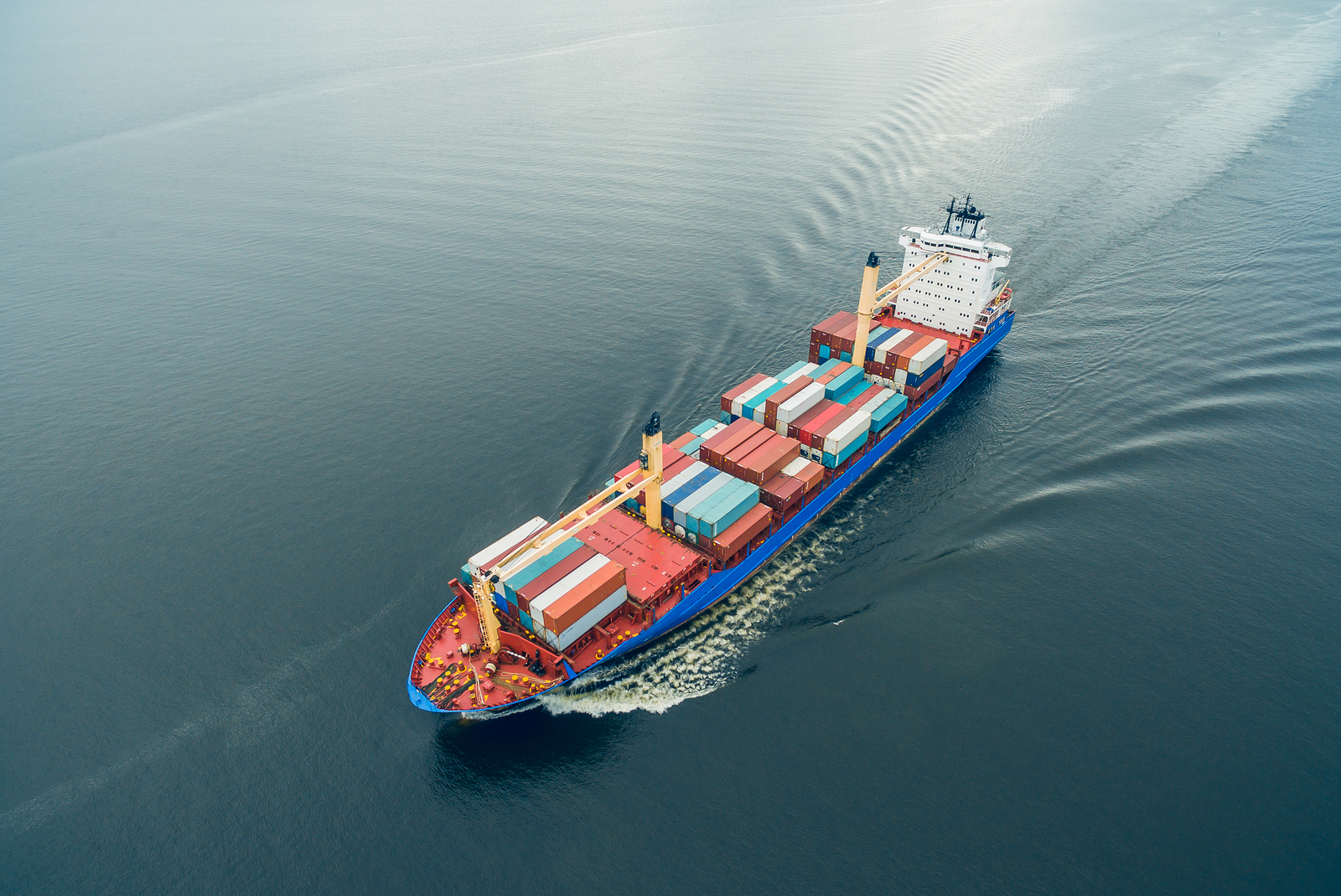
We also mentioned RoRo (roll-on / roll-off) ships earlier. Loading and unloading freight on these vessels is slightly different - due to the rolling aspect!
As you might imagine, cranes aren’t needed here as the cargo is wheeled (cars, trailers, trucks etc.) so it can simply be driven onto or off the ship.
There are a couple of variations on this theme however. RoCon ships are a combination of RoRo ships and container ships, meaning they carry wheeled cargo but also shipping containers. On these vessels there is normally a separate hold for the containers, or they may be loaded onto the deck.
Finally, meet the Lo-Lo ship, AKA the lift on / lift off ship. These are container ships which, instead of using the port’s container crane (otherwise known as the ship-to-shore crane or container handling gantry crane) use their own crane. This enables them to undertake cargo operations without assistance from the port.
The majority of container ships don’t have their own cranes, although smaller vessels that deal in lower volumes of freight may have a cargo crane onboard. Ships with their own cranes are known as geared container vessels, and ships without them are known as gearless container vessels.
Different types of shipping containers
Now, because the cargo that container ships carry varies so wildly, it makes sense that shipping containers are not all the same either. Below we’ll discuss sizes of shipping containers but first let’s take a look at the different types of ‘boxes’ that will depend on the freight being transported.
Standard dry shipping containers
These are the most widely used general-purpose containers for sea, road, or rail shipping. Constructed from durable steel or aluminum, they protect goods from water, wind, humidity, and other damage.
Standard dry containers are typically available in lengths of 20 ft, 40 ft, and 45 ft, with a width of about 8 feet (2.43m) and a height of 8.5 feet (2.59m). Aluminum containers offer a wider interior and a slightly higher net cargo weight capacity compared to steel containers, which have a larger internal cube.
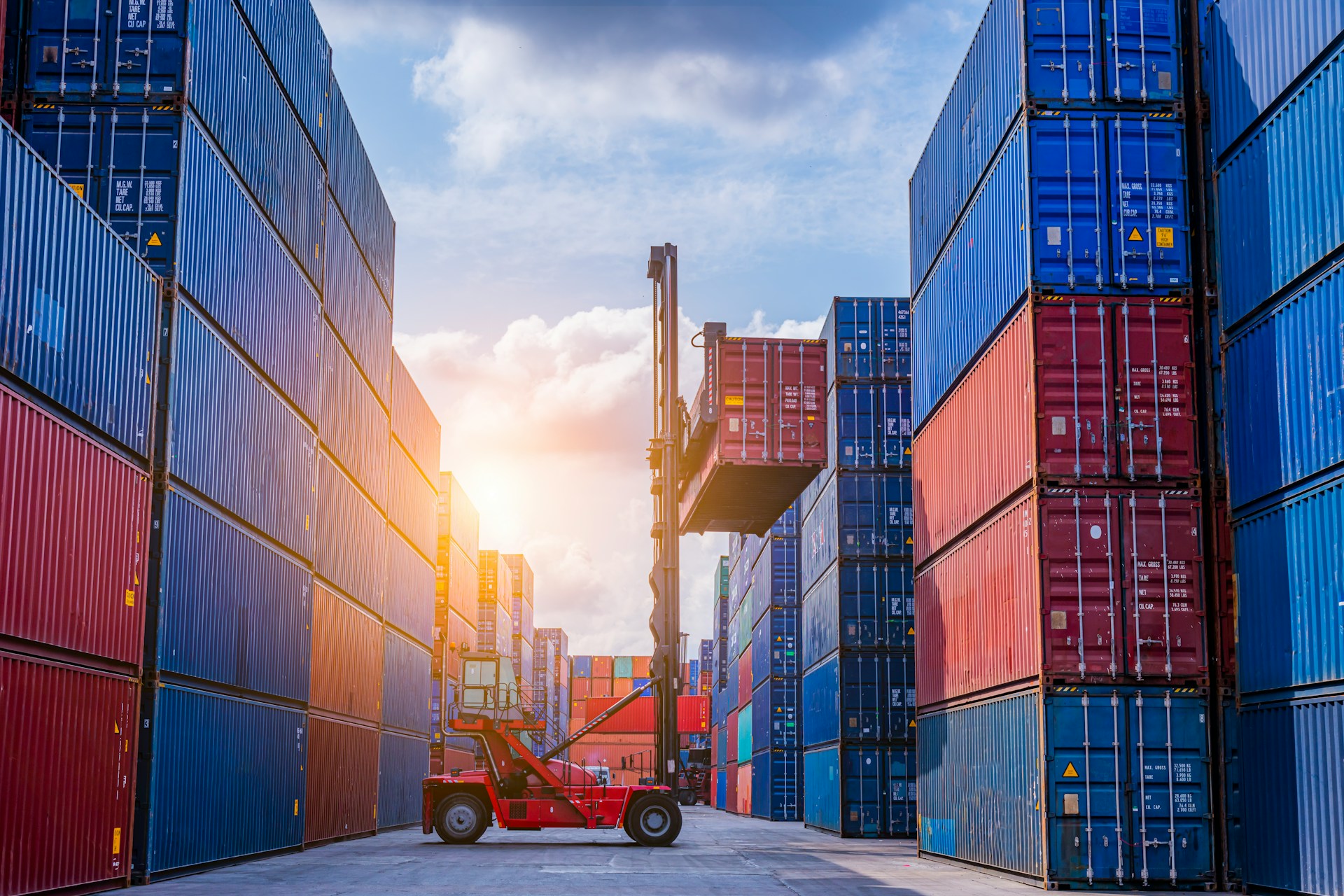
Open-top shipping containers
Open-top containers are similar to standard dry containers but lack a fixed roof, instead the roof is removable and is made from either tarpaulin or hardened steel, thus making the handling of goods easier. They are ideal for large goods not requiring the height of high cube containers. Open-top containers need to be loaded and unloaded by forklift.
High cube shipping containers
High cube containers are approximately a foot taller (approximately 2,896 mm or 9' 6") than standard dry containers, making them ideal for items requiring additional height. Suitable for shorter routes, they offer the same loading capacity as trailers and come in lengths of 20 ft, 40 ft, and 45 ft.
Reefer shipping containers
We briefly mentioned reefer (refrigerated) ships earlier and you’ll also find reefer containers. These are used for goods requiring controlled temperature, airflow and humidity. Equipped with a refrigeration unit connected to the vessel’s power supply, reefer containers maintain a stable internal temperature, controlled humidity, and proper airflow. Typical reefer cargo is of the frozen or chilled variety, such as meat, dairy, seafood, and ice cream.
Insulated or thermal shipping containers
Often referred to as non-operational refrigerated containers, insulated containers fall between standard dry and refrigerated containers in functionality. They feature regulated temperature control, ideal for long-distance transportation of fresh produce, pharmaceuticals, fresh produce, or even chemicals. These containers use a mechanical compressor to maintain the required temperature, ensuring the cargo is protected from contamination.
Flexitank shipping containers
Designed for transporting non-hazardous liquids such as water or cooking oil, flexitank containers feature an airtight, collapsible bag loaded with the liquid and secured inside a standard container. Flexitank containers can hold between 10,000 and 24,000 liters of liquid cargo, with customized versions capable of holding up to 100,000 liters.
Flat rack shipping containers
Flat rack containers resemble regular dry containers but lack two long side walls and a roof. Essentially a rack with a strong base, these containers are used for transporting large, bulky items that do not fit well in standard containers. During transit, they are often covered with heavy-duty tarpaulin to protect the cargo.
Special purpose shipping containers
Special purpose containers are designed to transport unique or hazardous cargo such as explosives or weapons. These containers are customized with specific materials to ensure they are safe and suitable for their specialized cargo.
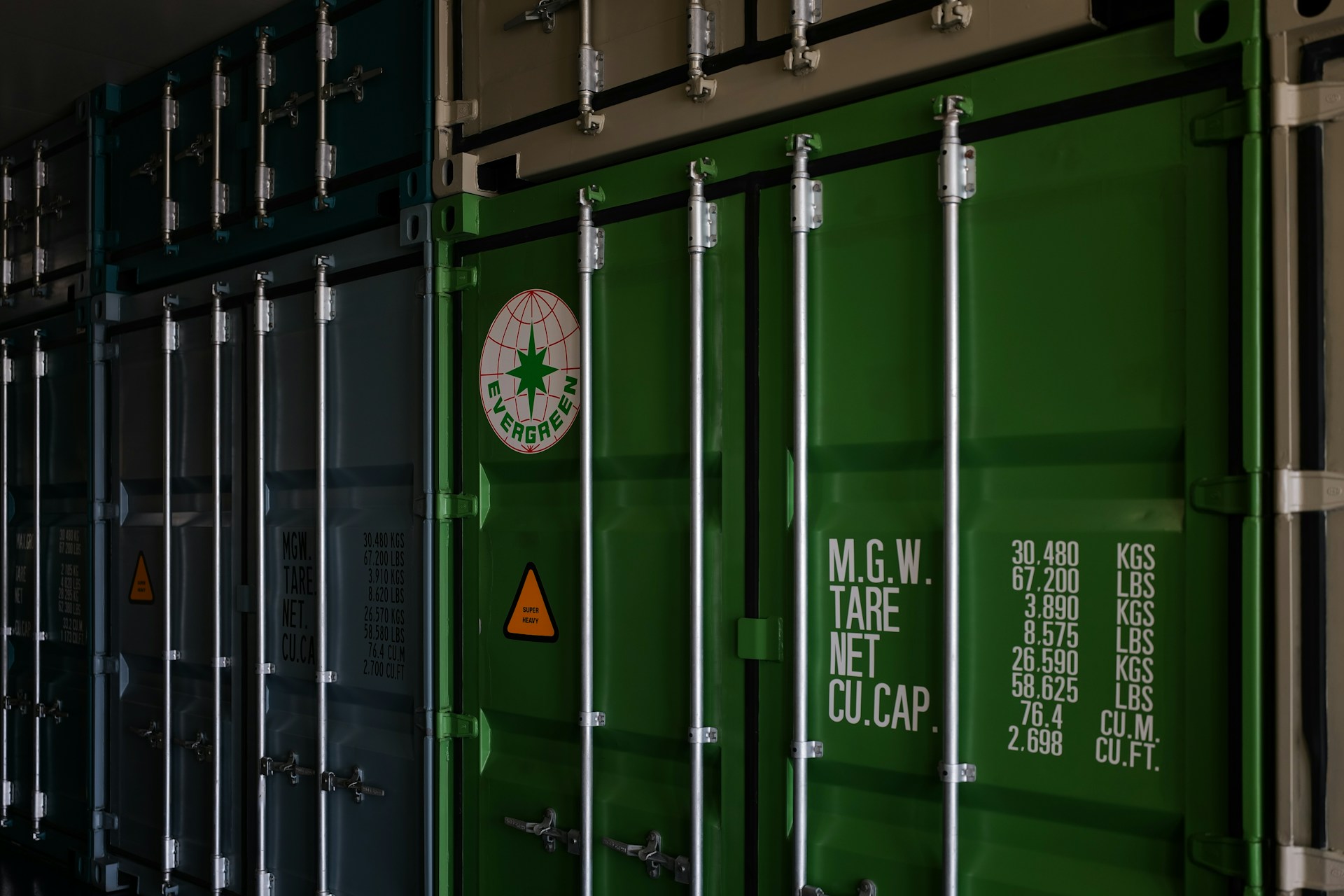
How many containers can a cargo ship carry?
Now we’ve explored different types of shipping containers, you might be wondering how many containers a cargo ship can carry in any given voyage.
Container ships have evolved quite dramatically over the years. For example, an early container ship built in 1956 could carry a cargo of 24 containers: 4 containers high and 6 across. That’s 500 - 800 TEU.
Wait! What’s a TEU?!
TEU stands for Twenty-foot Equivalent Unit. It is a measure of volume in units of twenty-foot long shipping containers. Therefore one 20-foot container equals one TEU. This gives shippers a guide to knowing how many containers a ship can hold.
By 1970, fully cellular container ships had begun to ply their trade. Cellular vessels are container ships that are specially designed to be able to store shipping containers one on top of each other, with vertical bracings at the four corners for extra stability and efficiency.
These vessels were now also carrying containers below deck and could transport around 1,000 - 2,500 TEU.
The Panamax and Panamax Max ships took things to another level in the 1980s, carrying respectively 3,000 - 3,400 TEU and 3,400 - 4,500 TEU.
As the name suggests, the Panamax ships were named as such because they were built specifically to fit through the Panama Canal.
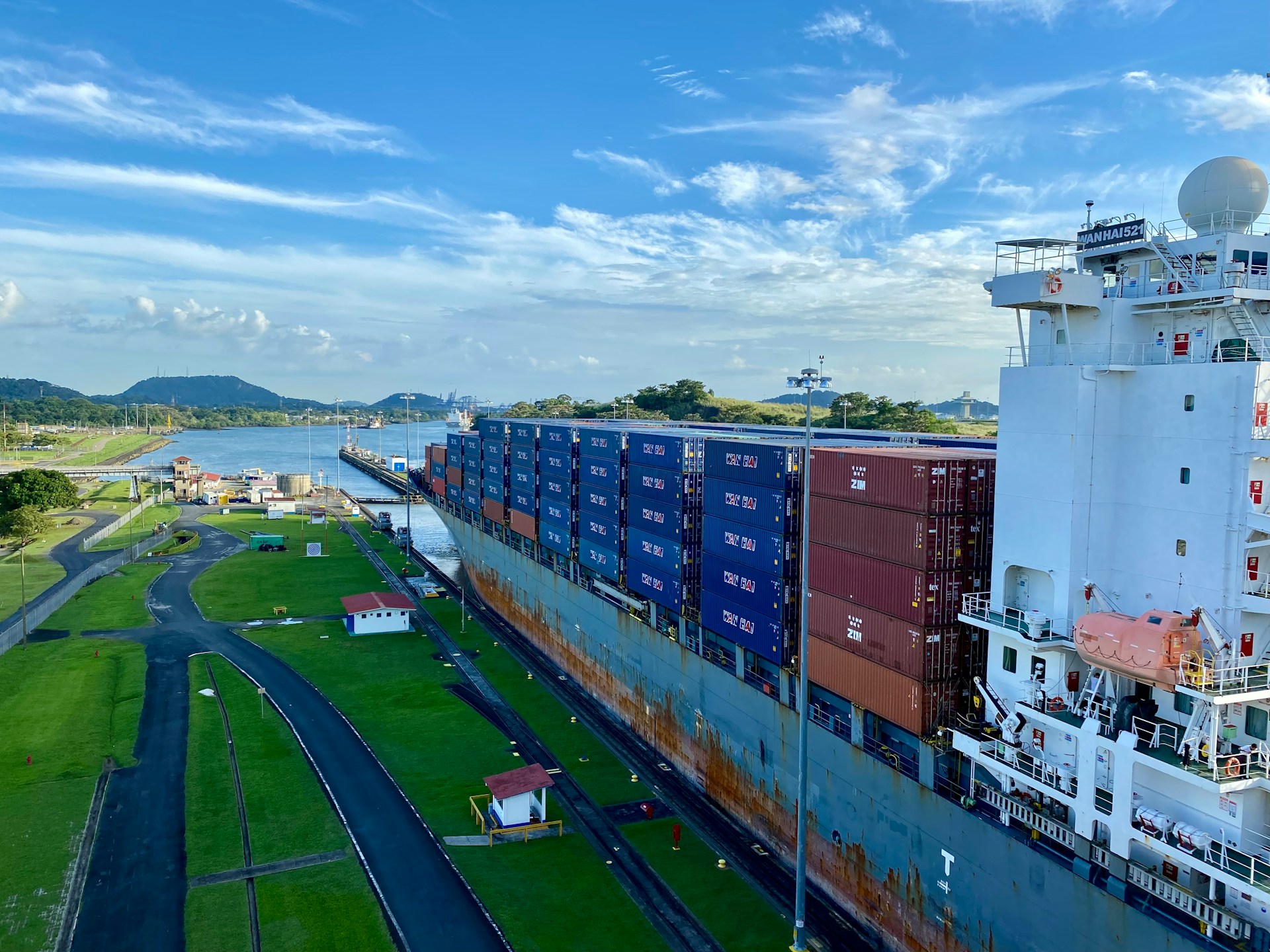
From the late 1980s through to the 2000s, Post-Panamax vessels upped the game with their storage volume of up to 8,500 TEU. They were followed in 2014 with the New Panamax (sometimes also called the Neo Panamax) which boasted a TEU of 12,500.
Now, and a far cry from the 500 TEU of the 1950s, the oceans play host to even bigger classes of vessels. Enter the VLCS (Very Large Container Ship), ULCS (Ultra Large Container Ship) and the MGX-24 (Megamax 24).
The latter are so called because of their 24 container bays, 24 deck rows and the 24-container stack (12 containers in the hold and 12 up on deck.) These floating behemoths have an TEU of up to 25,000.
What are Full and Less than Container Loads?
There are primarily two models of container shipment, Full Container Load (FCL) and Less thn Container Load (LCL). Here’s the difference between FCL and LCL shipping.
Full Container Load
Full Container Load, or FCL, is when a company uses an entire container exclusively for their cargo and covers the full cost of transportation. This method is typically used by large companies that do not need to share container space with other shippers.
Less than Container Load
As the name suggests, Less than Container Load, or LCL, involves consolidating multiple shipments into a single shared container. This option is suitable for businesses with smaller consignments, allowing them to pay only for the amount of space they occupy within the container.
And talking of costs…
How much does it cost to ship a container?
Several factors influence the cost of container shipping, regardless of whether they are Full Container Loads or Less than Container Loads.
Beyond the distance traveled, freight charges are affected by the shipping route, currency fluctuations, shipping terminal handling charges, the container size and type, and the shipment volume, and of course by fuel costs.
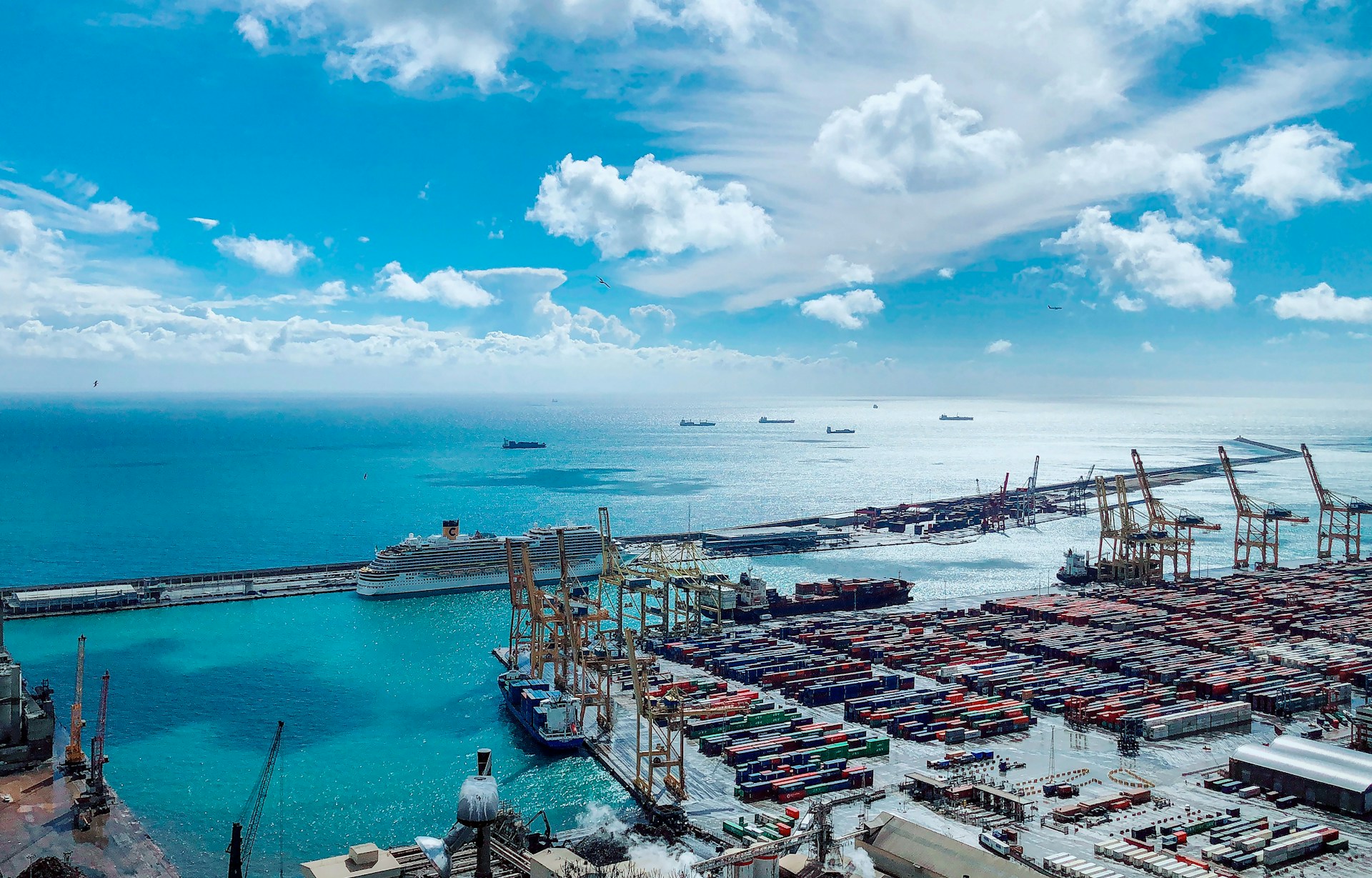
Container shipping costs can also fluctuate significantly. Think back to during the COVID-19 pandemic and its ensuing supply chain disruptions, port delays, and issues within inland distribution networks led to a substantial increase in shipping rates. Here are key factors that impact shipping costs:
Fuel prices
Fuel prices are subject to constant fluctuations and significantly impact freight charges. To mitigate the effects of varying fuel costs, shipping lines apply a bunker adjustment factor (BAF), an additional surcharge to account for oil price changes affecting shipping costs. (Bunker being a vessel’s fuel or oil.)
Shipping route
Certain sea routes are more heavily trafficked than others. Shipping on these busier routes generally costs more compared to less common routes. Other issues such as heightened levels of piracy and attacks on merchant vessels by various organizations due to ongoing conflict may also influence shipping routes, with shipowners deciding to take alternative (and often longer and less convenient) paths.
The time of year
Shipping costs typically rise before the holiday season in Europe and North America in December, as well as before the Chinese New Year in January or February. Consequently, the months leading up to these periods, such as October and November, are particularly busy for shippers, causing container shipping prices to increase.
Everything you need to know about cargo ships: Conclusion
Hopefully this has answered just some of your questions about cargo and container ships. Believe it or not, there’s still a lot more to know! But this should give you some idea of how container ships work and what life is like working on a cargo ship.
Don't forget to explore more of our articles about different types of vessels - we cover everything from icebreaker ships to heavy lift vessels to fishing vessels to tankers to fireboats and more.
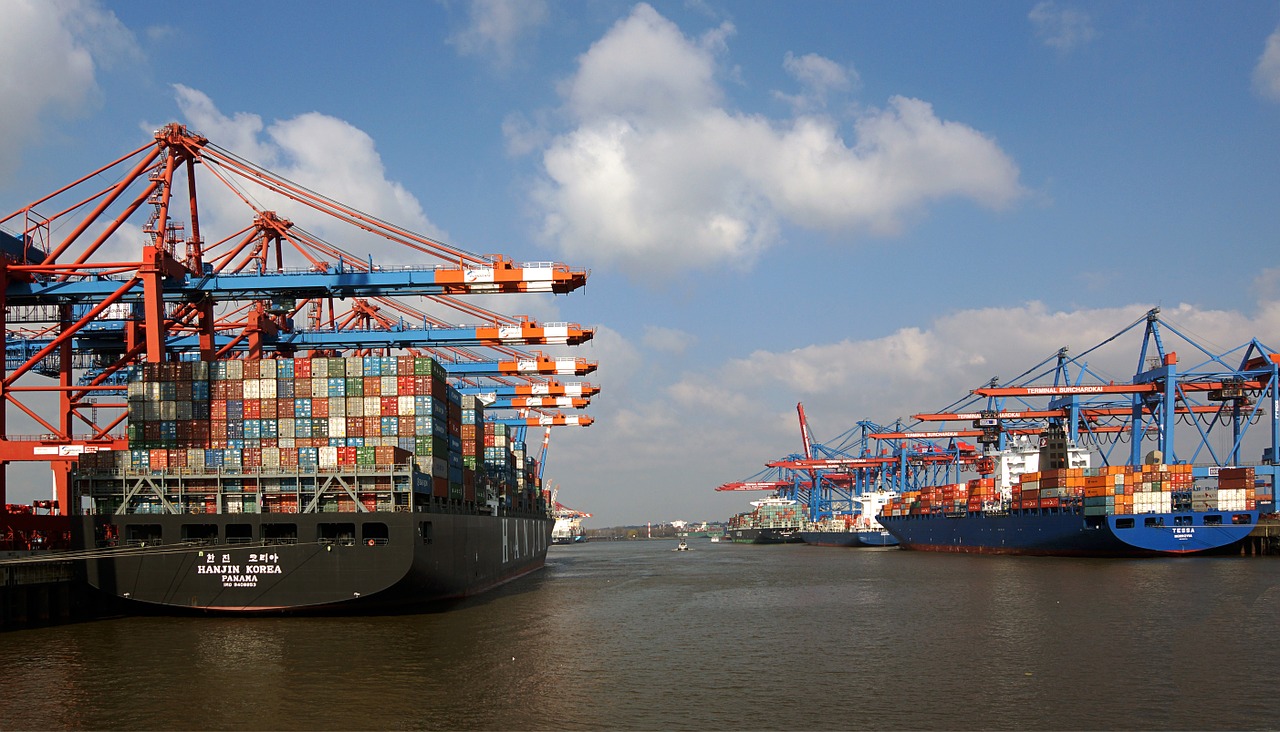
ARE YOU LOOKING FOR JOBS ON CONTAINER SHIPS? VIEW MARTIDE’S CONTAINER SHIP JOBS NOW!
But for now, we’ll move on to the next vessel in our series. We took a quick look at them earlier in this article, but now it’s time to take a closer look at everything you need to know about RoRo ships.
Read the previous post in this series: Your Guide to Types of Boats, Yachts, Ships & Vessels
Read the next post in this series: Everything You Need to Know About RoRo Ships
This blog post was originally published on October 8th 2021 and updated on July 4th 2024.

Eve Church
Eve is Martide's content writer, publishing regular posts on everything from our maritime recruitment and crew planning software to life at sea. Eve has been writing professionally for more than two decades, crafting everything from SEO-focused blog posts and website landing pages to magazine articles and corporate whitepapers.
UK

is the only site for maritime jobs



